To Reverse a Troubling Trend, Farmers Are Adding Rocks to Their Fields
Across the country, farmers are taking a chance on a new method: adding crushed volcanic rock to fields to improve soil health (and sequester carbon in the process).
To Reverse a Troubling Trend, Farmers Are Adding Rocks to Their Fields
Across the country, farmers are taking a chance on a new method: adding crushed volcanic rock to fields to improve soil health (and sequester carbon in the process).
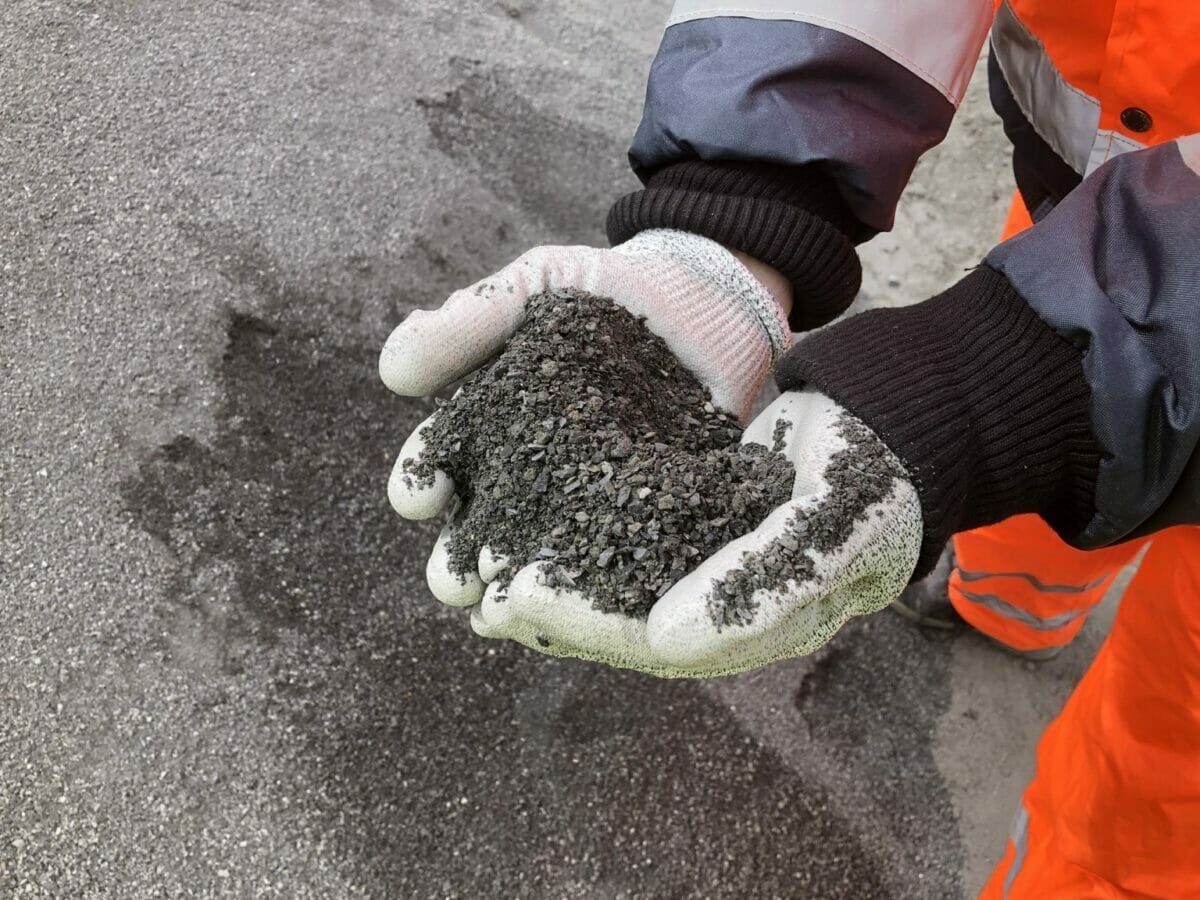
Studies show that volcanic rock dust can raise the pH of overworked soils, improving productivity.Photography courtesy of UNDO.
Chris Rauch was strolling past booths at the annual ag show in Spokane last summer when he spotted a large jar full of basalt powder. A nearby sign urged him to spread it on his croplands to help improve soil pH.
Rauch looked at the gray dust and shook his head.
“That’s crazy,” he thought. “Why would I want to put even more rocks in my fields?”
Rauch grows dryland wheat in the rolling gold-brown hills surrounding the Pendleton, Oregon, municipal airport. His farm lies on the Columbia Plateau, a 63,000-square-mile basin formed by ancient basalt lava flows. At the end of the last Ice Age, retreating glaciers scoured the bedrock, leaving a wake of grit and gravel to form the deep loess soil.
Not much rain falls in this grassland habitat. Some years, it’s 9 to 12 inches, but lately, it’s more like 6 to 9. Pre-cultivation, the region owed the healthy pH of its soils to the lucky coincidence of sitting atop a volcanic bed. However, the topsoil is powerless to counteract the acidifying effect of ammonia-based fertilizers. Over the years, this has caused pH levels to drop to 5 and below, according to Dr. Francisco Calderon, director of the Columbia Basin Agricultural Research Center.
“It’s not a widespread problem yet, but it’s rearing its ugly head in some places,” says Calderon.
A few weeks after the ag show, Rauch got the latest results of his soil pH tests: 5.3. He recalled the message from the ag show booth, run by a company called UNDO. The crushed rock raised soil pH levels. And it was free.
His first thought was, why? It seemed too good to be true. Yet the more he read, the more it seemed legit.
“You can’t beat zero,” he finally decided, and gave UNDO a call.
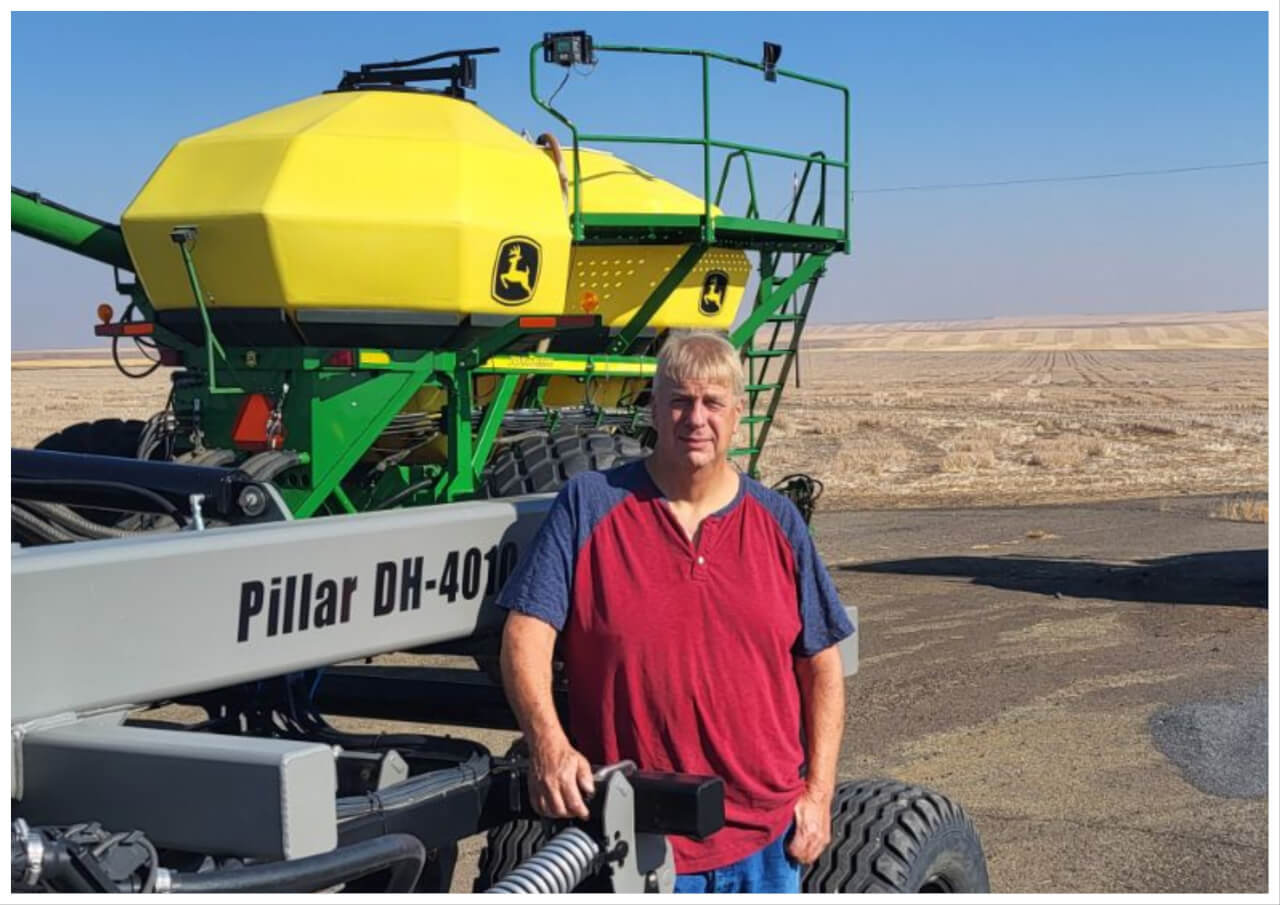
Rauch is one of many farmers taking a chance on a new process called Enhanced Rock Weathering, or ERW. Startup companies across the country are bringing crushed volcanic rock to farmers’ fields and spreading it to improve their soils. The rock powder, usually basalt, is often scavenged from local mines or quarries, where it exists as a waste by-product. ERW companies collect the rock powder, sometimes milling it further to reduce the grain size. Then they truck it to farms, where it is used in place of ag lime. Studies show that volcanic rock dust can raise the pH of overworked soils, improving productivity. And because enhanced rock weathering is considered a form of permanent carbon dioxide removal, the startups can sell “carbon credits” to large corporations like Microsoft that want to reduce their carbon footprint and show they are acting on climate change.
The method is based on decades of scientific research that exploits what some call “earth’s thermostat.” Carbon dioxide in the atmosphere naturally reacts with water to form a weak acid. This acid then bonds with minerals in volcanic stone and permanently removes the CO2 from the air. Geochemists discovered that this natural carbon cycle could be accelerated by crushing the rock, which exposes more of its reactive surface. A study published last month by the American Geophysical Union stated that ERW had the potential to sequester more than 200 gigatons of CO2 in a 75-year period. That would put a small but meaningful dent in the world’s CO2 emissions, which currently stand at around 37 gigatons per year.
Saving the world wasn’t on Rauch’s mind as he watched a spreader rumble over his fields, delivering what looked and sounded like dirty sleet. Rauch was worried about seeding, soil compaction and whether he’d end up with one giant gravel pile. To his surprise, the basalt blended with his soil as if it were just one more thing that had blown in on the wind.
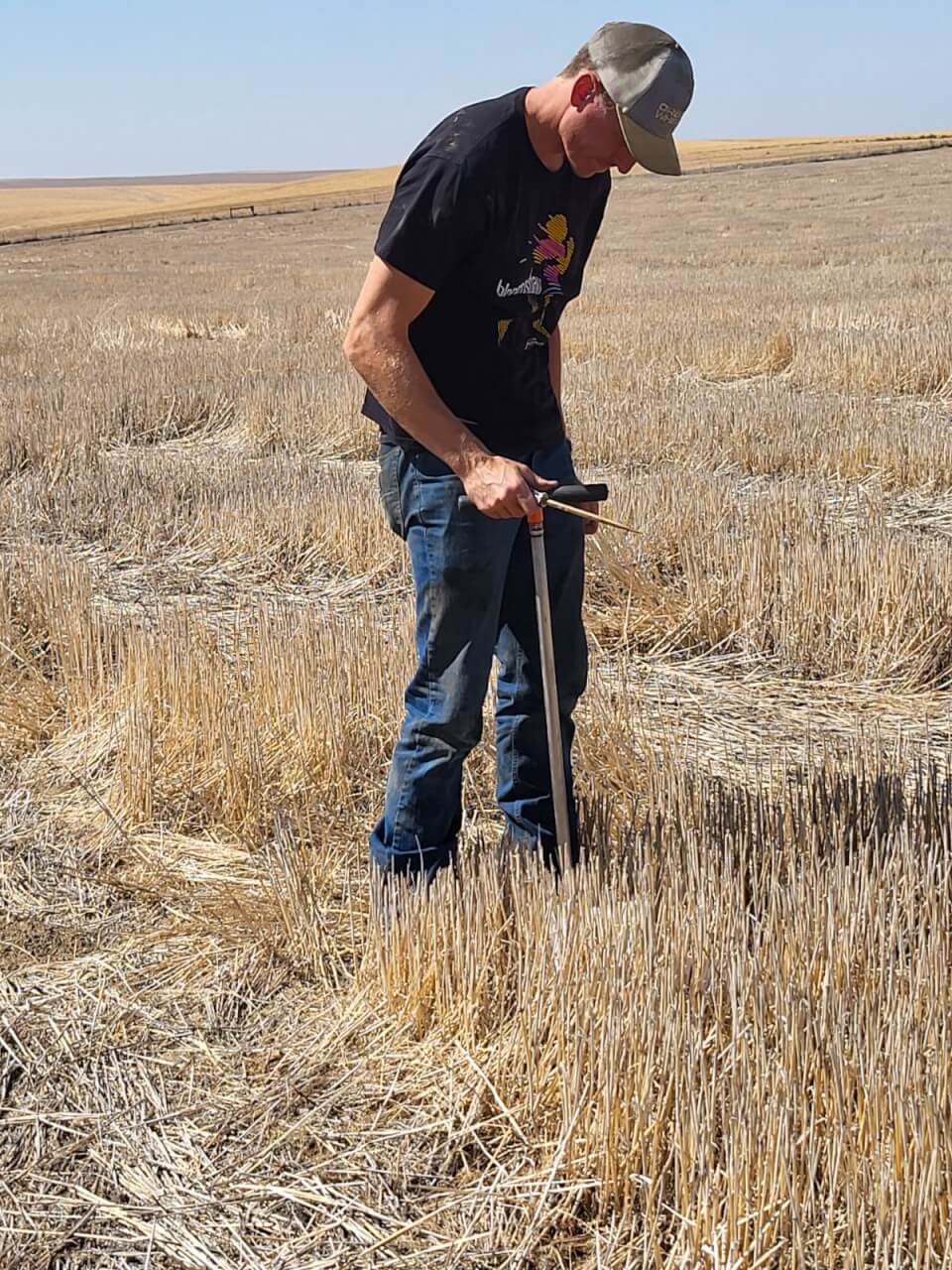
According to Zoe Young, UNDO’s local agent in the Pacific Northwest region, Rauch’s skepticism is a common response. At first, farmers think it sounds crazy. Then they want to know why they’re being offered something for nothing.
“It seems sneaky,” she says.
Young attributes farmers’ doubts to their fraught history with well-meaning programs.
“The green industry has taken advantage of farmers in a lot of ways,” she says. Farmers join waitlists for solar panels in exchange for not farming their fields, then the solar companies never show up. Or they’re tricked into signing multi-year contracts.
“Farmers can see the benefit for their farm,” Young explains. “But they say, ‘You’re just cashing in on the new bullshit market.’”
Michigan, the state shaped like a mitten, has acidic soils up towards its fingertips and alkaline soils down in its palm, where agricultural consultant Jesse Vollmar lives. The clay loam soil there is relatively good, with a natural pH between 6.5 and 7, and rainfall is an enviable 20 inches per year. While these Midwest conditions may sound ideal for farming, years of tilling and heavy fertilizer use have taken their toll.
read more
How Brooke Singer is Making Soil Health Accessible for Everyone
Vollmar is from a 5th-generation farm family. He began his career helping other farmers enroll in federal sustainable agriculture programs and saw their struggles firsthand. Farmers needed years’ worth of tillage and cover crop records to be eligible. Once enrolled, they were required to conduct regular soil tests. Payout came only after a decade.
Two years ago, Vollmar began working with Lithos Carbon, a small ERW company based in Seattle. He likes that ERW companies do all the soil tests and record-keeping and require only a one-year commitment. Vollmar remains a strong proponent of regenerative farming and believes the two should be practiced together. But in his view, the economics of ERW can’t be beat.
“It’s just a no-brainer for farmers,” he says. “The hardest part is keeping up with demand.”

A few states over in the Piedmont region of southern Virginia, farmer Rick Bennett is a Lithos client. Bennett grows corn, sweet beans, soybeans and cereals on old tobacco land that has seen two centuries of heavy use. The soil, a mixture of silt and clay, is acidic and low in organic matter.
Last spring, Bennett chose a particularly acidic plot and contracted with Lithos to treat it. The company created a series of test strips so that Bennett could observe the difference, and he planted soybeans over the entire area. Five months later, Bennett doesn’t see a great deal of difference, but he says he will know for certain when he puts a combine in the field.
“It’s not about looks but the number of pods and beans in the pods.”
Former professional football player turned farmer Jason Brown also tried basalt powder last spring on First Fruits Farm, his 1,000-acre farmstead in Louisburg, North Carolina. Brown donates much of what he raises to help fight hunger in his community. But he understands the razor-thin budgets of his fellow farmers, which forces many of them to pick and choose which crops they can afford to grow. Enhanced rock weathering can help ease the crunch, says Brown.
“It’s all-around mutually beneficial, but for farmers, this is a really big deal,” Brown explains. “Most times, we have to write very large checks for every amendment we add to our soils. This is one of the rare times when farmers not only get a break but a benefit.”
Brown says that local farmers are waiting to see whether first adopters like him get better soil test results—and, importantly, a check in the mail for allowing liming on their fields.
“Once that happens, I promise you that every farmer from Virginia to South Carolina is going to be waiting in [the] queue to sign up.”
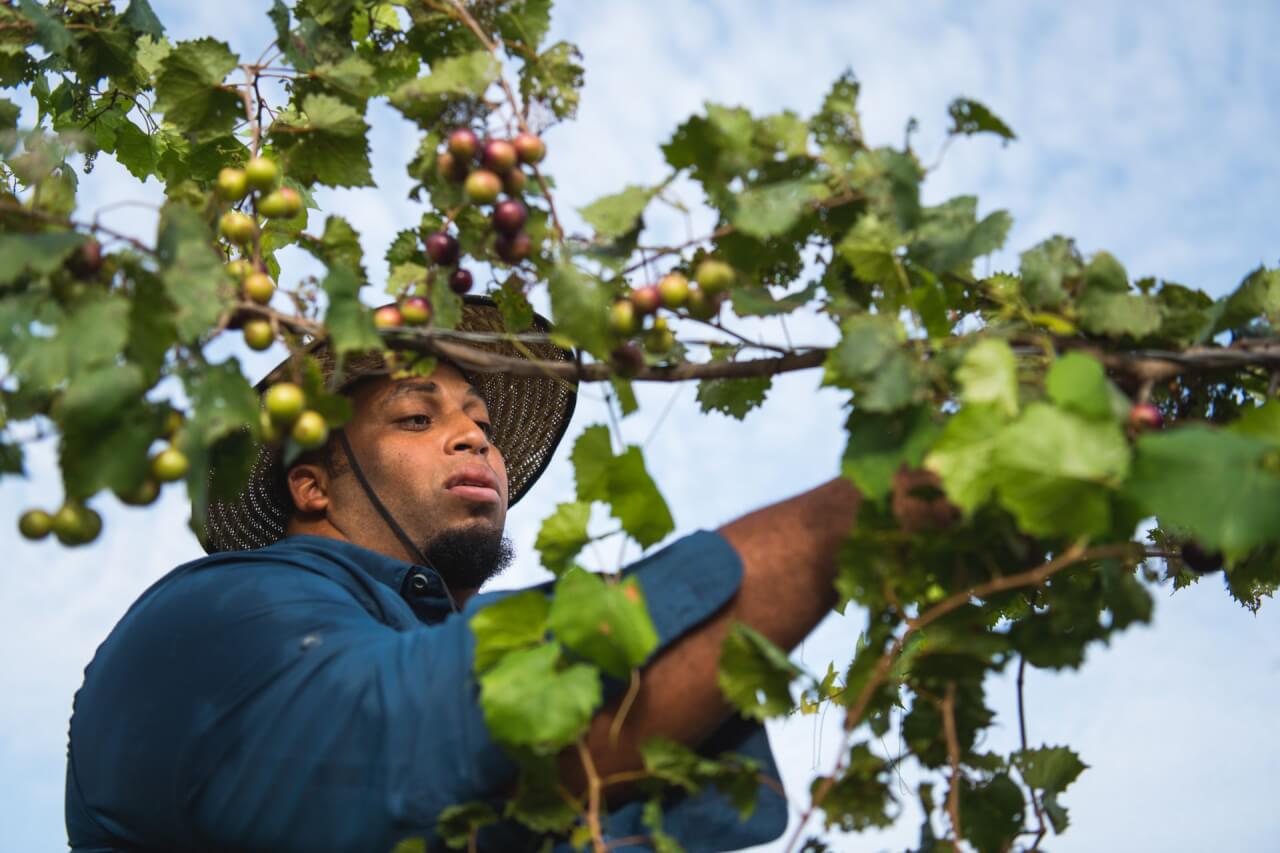
Basalt is the most common volcanic rock on earth, coating the floors of most seas, underlying areas such as the Columbia Plateau, and jutting out in strange columnar formations such as the Giant’s Causeway in Ireland. But volcanoes spew out many types of molten rock. Another volcanic mineral is olivine, a greenish stone that comprises the majority of earth’s upper mantle. Studies show that olivine has a higher capacity than basalt to capture CO2 and may be quicker—at least initially—to alter soil pH.
The Princeton-based company EION uses olivine to lay down rock dust in the steamy fields of the Mississippi River Delta region. Soils there are old, red and acidic, like soils in the tropics. The landscape is a patchwork of timber, pasture, row crops, hunting habitat and buffer strips—an ideal model for managing agricultural land for multiple ends, according to Adam Wolf, founder and CEO of EION.
“They have an appreciation for the natural world,” says Wolf. “It’s not as reductionist as in places like California, where you see vast landscapes dominated by one crop.”
Heat and humidity speed the reaction of rock weathering, and EION uses that plus olivine’s high CO2 capture rate to do more with less. The company spreads two to three tons of olivine per acre instead of nine or 10 tons of basalt. However, because local olivine sources don’t exist, EION must import the olivine by ship from Norway. Once it reaches the vast river system of the Mississippi, it can be milled and distributed to farms as far away as North Dakota.
Dan Prevost is a Mississippi farmer and agricultural consultant for EION. He rents patches of “used and abused” land near his home in south-central Mississippi and helps local farmers try out rock dust in their fields.
“I don’t own any land of my own, so I get the land nobody else wanted,” Prevost jokes. “Rebuilding the soil is my number one priority.”
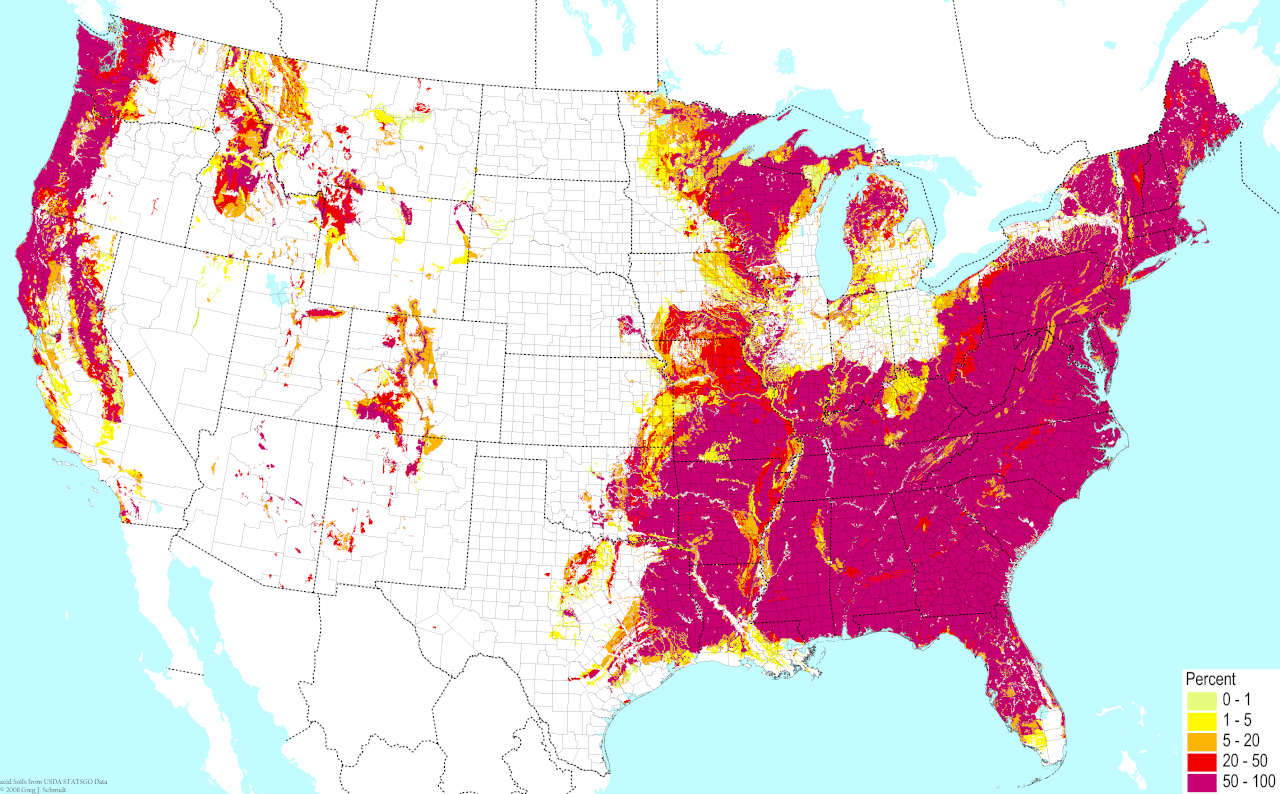
Like Vollmar, Prevost started in regenerative farming and knows the critical importance of soil pH.
“Once you get a piece of farmland, the very first thing you do is get your pH right,” says Prevost. ‘That optimizes nutrient availability. If you have a low pH, you can put all the fertilizer on that you want, but the nutrients aren’t going to be available.”
Prevost tested olivine on his land last spring. He chose a poor, acidic soil section and laid down two tons per acre, then planted corn on both treated and untreated plots. Although he’s still waiting for final data, Prevost says that the corn on the treated side was “super dark green” compared to the untreated section.
Prevost has plenty of farmers willing to try ERW, but, like Young and Vollmar, he understands their initial reluctance. Farmers are constantly harangued about the latest ‘hot topic,’ he says, from sedimentation and erosion to pesticides, nutrient loading in waterways and declining irrigation aquifers. While all are important, the sheer quantity can be overwhelming.
“Now we’re talking about climate change,” says Prevost. “Next on the list is going to be biodiversity. Farmers get jaded with things pretty quick.”
Climate programs also get a bad rap in the Deep South because they often promise unachievable carbon capture levels. Soil microbes cycle faster there than in colder, drier climates, says Prevost. Their carbon is released back into the atmosphere when they die, defeating the programs’ goals.
Prevost talks about improved pH, micro-nutrients and crop yields in his work with farmers rather than saving the planet.
“Typically, we don’t talk about climate change because that’s just another hot topic,” he says. “But everybody can pretty much agree that things are different. We’re getting more intense weather patterns—drier dries and wetter wets and more frequent hailstorms.”
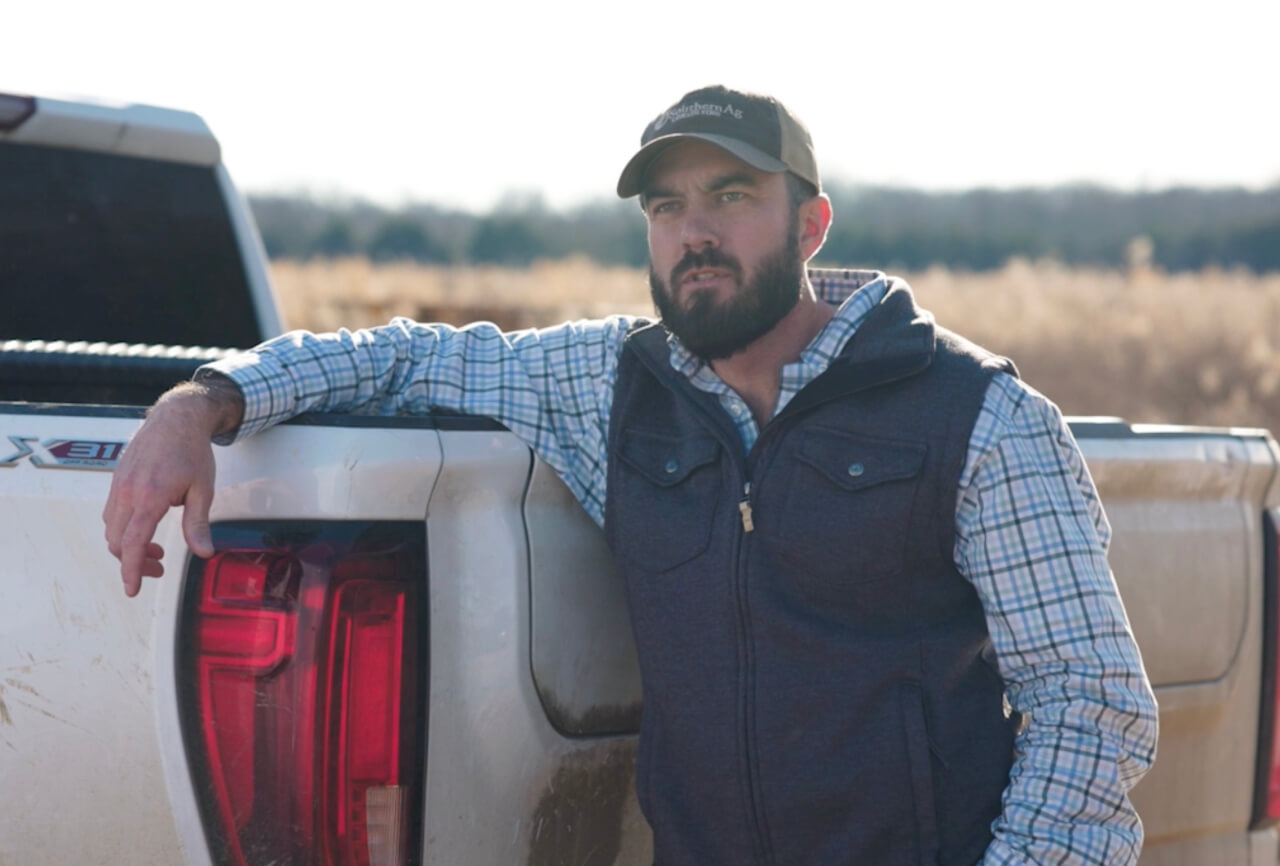
Across the country, farmers are testing a new method of improving the health and productivity of their soils. From the semi-arid high desert of eastern Oregon to the subtropical floodplain of the Mississippi Delta, they’re partnering with new companies that offer an apparently legitimate something-for-nothing deal. Whether soils are naturally acidic or made so by man, volcanic rock dust appears to help restore healthy soil pH levels and, along with it, soil fertility and productivity.
The next few years should tell whether enhanced rock weathering becomes one more bothersome “hot topic” or catches on as a boon to both farmers and the planet. The lab research proves ERW’s potential; the first field data is coming in with the fall harvest.
Out in Pendleton’s golden wheat fields last month, Chris Rauch received the latest soil pH test results: 5.7-5.8, substantially higher than last year’s reading of 5.3.
Rauch was surprised.
“Whether it’s the rock or that the stars lined up that day, it’s too soon to know for sure,” he says. But it’s a trend in the right direction.”
read more
We Need Regenerative Agriculture, But How Can Farmers Fund the Transition?
Follow us
This work is licensed under a Creative Commons Attribution-NoDerivatives 4.0 International License.
Want to republish a Modern Farmer story?
We are happy for Modern Farmer stories to be shared, and encourage you to republish our articles for your audience. When doing so, we ask that you follow these guidelines:
Please credit us and our writers
For the author byline, please use “Author Name, Modern Farmer.” At the top of our stories, if on the web, please include this text and link: “This story was originally published by Modern Farmer.”
Please make sure to include a link back to either our home page or the article URL.
At the bottom of the story, please include the following text:
“Modern Farmer is a nonprofit initiative dedicated to raising awareness and catalyzing action at the intersection of food, agriculture, and society. Read more at <link>Modern Farmer</link>.”
Use our widget
We’d like to be able to track our stories, so we ask that if you republish our content, you do so using our widget (located on the left hand side of the article). The HTML code has a built-in tracker that tells us the data and domain where the story was published, as well as view counts.
Check the image requirements
It’s your responsibility to confirm you're licensed to republish images in our articles. Some images, such as those from commercial providers, don't allow their images to be republished without permission or payment. Copyright terms are generally listed in the image caption and attribution. You are welcome to omit our images or substitute with your own. Charts and interactive graphics follow the same rules.
Don’t change too much. Or, ask us first.
Articles must be republished in their entirety. It’s okay to change references to time (“today” to “yesterday”) or location (“Iowa City, IA” to “here”). But please keep everything else the same.
If you feel strongly that a more material edit needs to be made, get in touch with us at [email protected]. We’re happy to discuss it with the original author, but we must have prior approval for changes before publication.
Special cases
Extracts. You may run the first few lines or paragraphs of the article and then say: “Read the full article at Modern Farmer” with a link back to the original article.
Quotes. You may quote authors provided you include a link back to the article URL.
Translations. These require writer approval. To inquire about translation of a Modern Farmer article, contact us at [email protected]
Signed consent / copyright release forms. These are not required, provided you are following these guidelines.
Print. Articles can be republished in print under these same rules, with the exception that you do not need to include the links.
Tag us
When sharing the story on social media, please tag us using the following: - Twitter (@ModFarm) - Facebook (@ModernFarmerMedia) - Instagram (@modfarm)
Use our content respectfully
Modern Farmer is a nonprofit and as such we share our content for free and in good faith in order to reach new audiences. Respectfully,
No selling ads against our stories. It’s okay to put our stories on pages with ads.
Don’t republish our material wholesale, or automatically; you need to select stories to be republished individually.
You have no rights to sell, license, syndicate, or otherwise represent yourself as the authorized owner of our material to any third parties. This means that you cannot actively publish or submit our work for syndication to third party platforms or apps like Apple News or Google News. We understand that publishers cannot fully control when certain third parties automatically summarize or crawl content from publishers’ own sites.
Keep in touch
We want to hear from you if you love Modern Farmer content, have a collaboration idea, or anything else to share. As a nonprofit outlet, we work in service of our community and are always open to comments, feedback, and ideas. Contact us at [email protected].by Ann Leslie Davis, Modern Farmer
September 25, 2023
Modern Farmer Weekly
Solutions Hub
Innovations, ideas and inspiration. Actionable solutions for a resilient food system.
ExploreExplore other topics
Share With Us
We want to hear from Modern Farmer readers who have thoughtful commentary, actionable solutions, or helpful ideas to share.
SubmitNecessary cookies are absolutely essential for the website to function properly. This category only includes cookies that ensures basic functionalities and security features of the website. These cookies do not store any personal information.
Any cookies that may not be particularly necessary for the website to function and are used specifically to collect user personal data via analytics, ads, other embedded contents are termed as non-necessary cookies.
Why are we importing rocks from overseas? It seems that if there is profit to be made shipping these minerals from Norway, there would be a market for this material shipping it from within the US?!
what is the heavy metal analysis of the crusher dust
You must be Jo King
The question of possible contaminants is critical and has been looked at by major research institutions in the United States and Europe. Firstly, there’s a key difference between basalt mine tailings and mine tailings from highly polluting industries like iron, copper, or precious metal mines. Those tailings are the waste product of chemical processes that extract a tiny amount of metal from the surrounding ore. They and the associated chemicals are indeed toxic. Basalt mining involves cutting or blasting the rock from the ground. The “tailings” are leftover pieces of basalt that are too small to be used for other… Read more »
Sounds good, hope it works.
Everybody KNOWS how clean mine tailings are – – Dontcha think that’s why the mine companies cant wait to give the stuff away. And everybody KNOWS dilution is the solution to pollution. Dontcha thinks that’s why the mine companies are so willing to truck that filth all over creation so they won’t have to clean it up! Nobody will be able to clean it up, ever. Modern Farmer, you should be ashamed of yourself for spreading such filth! (pun acknowledged)